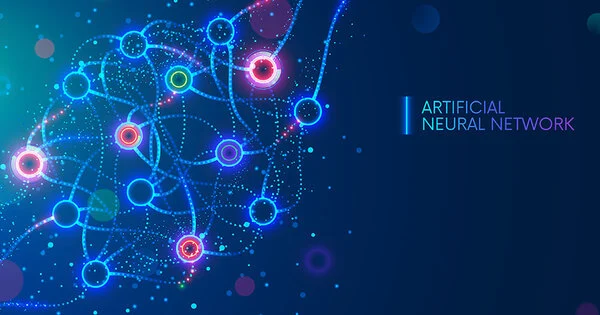Artificial neural networks (ANNs) are a type of machine learning algorithm inspired by the structure and function of biological neural networks in the brain. ANNs are designed to recognize patterns and relationships within data and use those patterns to make predictions or classifications on new data.
Artificial neural networks (ANNs), also known as neural networks (NNs) or neural nets, are computing systems inspired by the biological neural networks found in animal brains. An ANN is made up of node layers, which include an input layer, one or more hidden layers, and an output layer. Each node, or artificial neuron, is linked to another and has its own weight and threshold. If the output of any individual node exceeds the specified threshold value, that node is activated and begins sending data to the network’s next layer. Otherwise, no data is passed to the next network layer.
The basic building block of an ANN is a neuron, which receives input from other neurons or from external sources, applies a mathematical transformation to that input, and produces an output that is transmitted to other neurons in the network. The neurons are arranged in layers, with each layer receiving input from the previous layer and producing output for the next layer. The first layer of the network is the input layer, the last layer is the output layer, and any layers in between are called hidden layers.
An ANN is built from a network of connected units or nodes known as artificial neurons, which are loosely modeled after the neurons in the human brain. Each connection, like synapses in a biological brain, has the ability to send a signal to other neurons. An artificial neuron receives signals, processes them, and can signal neurons to which it is connected. Each neuron’s output is computed by some non-linear function of the sum of its inputs, and the “signal” at a connection is a real number. The connections are referred to as edges. Neurons and edges usually have a weight that changes as learning progresses. The weight changes the strength of the signal at a connection. Neurons may have a threshold such that a signal is sent only if the aggregate signal crosses that threshold.
Neurons are typically organized into layers. Different layers may apply various transformations to their inputs. Signals travel from the first layer (the input layer) to the final layer (the output layer), possibly multiple times.
Applications
ANNs have been used in a wide range of applications, including image and speech recognition, natural language processing, and predictive modeling in finance and other industries. One of the most popular types of ANNs is the deep neural network, which has multiple hidden layers and has been particularly successful in areas such as computer vision and natural language processing.
Training data is used by neural networks to learn and improve their accuracy over time. However, once these learning algorithms have been fine-tuned for accuracy, they become powerful tools in computer science and artificial intelligence, allowing us to classify and cluster data at high speeds. When compared to manual identification by human experts, tasks in speech recognition or image recognition can take minutes rather than hours. Google’s search algorithm is one of the most well-known neural networks.
















